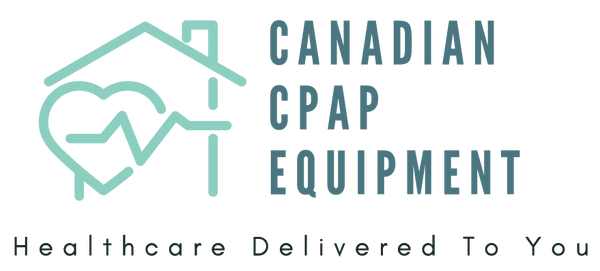Receiving a diagnosis of sleep apnea, especially after an at-home test, can bring a mix of emotions relief at finally having an answer, but perhaps also uncertainty about what comes next. The good news is that a diagnosis is the crucial first step towards significantly improving your health and quality of life. This article will guide you through the typical steps that follow an at-home sleep apnea diagnosis, from understanding your results to starting effective treatment.
1. Virtual Consultation with a Sleep-Trained Respirologist
After your at-home sleep apnea test data has been analyzed, the most important next step is a virtual consultation with a qualified medical professional, typically a sleep-trained respirologist. During this consultation, the respirologist will:
-
Review Your Results: They will explain your test results in detail, including your Apnea-Hypopnea Index (AHI), Oxygen Desaturation Index (ODI), and other relevant metrics. They will clarify what these numbers mean for your specific condition and its severity.
-
Discuss Your Symptoms and Medical History: The respirologist will connect your test results with your reported symptoms and overall health history to provide a comprehensive understanding of your diagnosis.
-
Answer Your Questions: This is your opportunity to ask any questions you have about sleep apnea, your diagnosis, and the recommended next steps.
- Provide a Diagnosis and Recommendations: Based on the complete picture, they will confirm your sleep apnea diagnosis and recommend the most appropriate treatment plan tailored to your needs.
2. Obtaining a CPAP Prescription (If Applicable)
For most individuals diagnosed with Obstructive Sleep Apnea (OSA), Continuous Positive Airway Pressure (CPAP) therapy is the most effective and commonly recommended treatment. If CPAP is deemed appropriate for you, the respirologist will issue a prescription for a CPAP machine and accessories. This prescription is essential for acquiring the necessary equipment.
3. Exploring Treatment Options: CPAP and Beyond
While CPAP is the primary treatment for OSA, your respirologist will discuss all viable options. These may include:
-
CPAP Therapy: This involves wearing a mask over your nose or nose and mouth during sleep. The machine delivers a continuous stream of air pressure that keeps your airway open, preventing apneas and hypopneas. Your respirologist will help determine the optimal pressure settings for you.
-
Lifestyle Modifications: For mild cases, or as an adjunct to other treatments, lifestyle changes such as weight loss, avoiding alcohol and sedatives before bed, and changing sleep positions can be beneficial.
Oral Appliances: Custom-made dental devices can reposition the jaw or tongue to keep the airway open. These are typically used for mild to moderate OSA or for those who cannot tolerate CPAP.
- Surgery: In some cases, surgical procedures may be considered to remove or shrink tissue that obstructs the airway. This is usually a last resort.
4. Acquiring Your CPAP Equipment
Once you have your CPAP prescription, you can proceed to acquire your equipment. This typically involves:
-
Choosing a Provider: Select a reputable provider for your CPAP machine, mask, and other accessories. They can guide you through the selection process based on your prescription and personal comfort.
-
Mask Fitting: A proper mask fit is crucial for comfortable and effective CPAP therapy. Your provider will help you try different mask types (nasal pillows, nasal masks, full-face masks) to find the best fit for your face and sleeping habits.
- Setting Up Your Machine: Your provider will assist you with the initial setup of your CPAP machine, explaining its functions and how to use it correctly.
5. Starting CPAP Therapy: The Adjustment Period
Beginning CPAP therapy requires an adjustment period. It's normal to feel a bit overwhelmed or uncomfortable at first. Patience and persistence are key. Here are some tips for the initial phase:
-
Wear Your Mask Consistently: Even if it's just for short periods during the day, getting used to the mask is important.
-
Start Gradually: Begin by using the CPAP for a few hours each night and gradually increase your usage.
-
Utilize Comfort Features: Most modern CPAP machines come with features like ramp (gradually increasing pressure), humidifiers (to prevent dryness), and heated tubing (for comfort) that can significantly improve your experience.
-
Troubleshoot Issues: Don't hesitate to contact your CPAP provider or respirologist if you experience discomfort, mask leaks, or other issues. They can help you troubleshoot and optimize your therapy.
6. Ongoing Monitoring and Follow-Up
Sleep apnea treatment is an ongoing process. Regular follow-up appointments with your respirologist and CPAP provider are essential to monitor your progress, ensure the effectiveness of your therapy, and make any necessary adjustments. Many modern CPAP machines record usage data that can be reviewed remotely, making follow-up convenient.
Conclusion
An at-home sleep apnea diagnosis is not an end, but a beginning – the beginning of a journey towards better health and improved quality of life. By understanding the steps that follow your diagnosis and actively engaging with your healthcare team, you can effectively manage your sleep apnea and enjoy the profound benefits of restorative sleep.
Next Steps: Ready to dive deeper into the most common and effective treatment? Our next post will explain CPAP therapy in detail, helping you understand how it works and what to expect.

